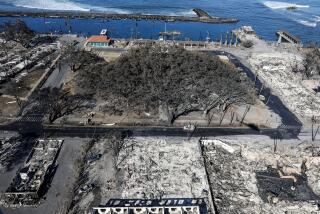With G-20, Pittsburgh gets its 15 minutes
Andy Warhol never hid his feelings about his hometown.
“He didn’t like Pittsburgh one bit,” said Thomas Sokolowski, director of the Andy Warhol Museum, which features seven floors of Marilyn Monroes, Brillo boxes and other iconic works by the famed pop artist. “He always told people he came from nowhere.”
Now Pittsburgh is about to get what its native son famously said everyone deserves: 15 minutes of fame. President Obama and the leaders of the other Group of 20 nations will arrive here Thursday for a two-day summit aimed at ending financial turmoil and promoting economic growth.
The heads of state previously gathered in Washington and then London to address the global economic meltdown. On Sunday, a front-page headline in the Pittsburgh Post-Gazette asked the obvious question about the third G-20 summit: “Why Pittsburgh?”
In response, Obama told the paper that Pittsburgh was a world-class town that had “transformed itself, after some very tough times, into a city that’s competing in the world economy.”
Local officials hope to show how their riverside city has reinvented itself since the last of its smoke-belching steel mills closed in the 1980s. No longer considered “hell with the lid off,” as an early critic put it, Pittsburgh now boasts a diversified economy and a livable environment.
“The rest of the world has an image of Pittsburgh as a smoky city, a dirty city, a dying Rust Belt city,” explained the 29-year-old mayor, Luke Ravenstahl. “But that’s not true anymore.”
Healthcare and biotechnology have replaced steel as the largest employers. Joblessness is at 7.7%, below both the state and national averages. The city center and many of Pittsburgh’s 89 neighborhoods and ethnic enclaves are vibrant and busy.
In addition to universities and orchestras, Pittsburgh boasts three sports teams: the Super Bowl champion NFL Steelers; the Penguins, who won hockey’s Stanley Cup; and the Pirates, who, as one long-suffering baseball fan put it, “have a nice ballpark.”
Pittsburgh also is a pioneer in green technology, a priority for the Obama administration. The G-20 leaders will meet in a new, energy-efficient convention center. They will eat dinner at the century-old Phipps Conservatory and Botanical Gardens, which has designed a cutting-edge research facility that requires almost no outside energy or water.
“Here we are, a relic of the industrial revolution, and we’re building one of the greenest buildings in the world,” said Richard Piacentini, executive director of Phipps.
However, Pittsburgh’s troubled past is never far away.
Abandoned buildings still line some streets, and the city is all but bankrupt, saddled with more than $1.5 billion in pension obligations and bond debts.
“Pittsburgh has not done well in attracting new businesses,” said Jake Haulk, president of the Allegheny Institute for Public Policy, a local think tank. “Our employment base has been flat for a long time.”
Moreover, this is the only American city that has lost population for four straight decades. It now has about 310,000 residents, less than half its former size. Unlike most major cities, the population is overwhelmingly white -- and old.
“We’re the only major metropolitan area with a natural population decline,” said Christopher Briem, a regional economist at the University of Pittsburgh’s Center for Social and Urban Research. “That means there are more deaths than births each year.”
For now, work crews are racing to prepare for the media spotlight that will follow 11 presidents, seven prime ministers, a chancellor and a king during their visit.
Authorities will put 4,000 police on the street and 2,000 National Guard troops on standby in case anti-globalization protests spiral out of control. Activists for an array of causes have poured into the city, and rallies, street theater and workshops began last weekend.
Melissa Minnich, a local activist, said the main event would be a protest march toward the convention center on Friday. “It will be as nonviolent as possible,” she said.
Whether the summit proves a success remains to be seen. The policy prescriptions of the G-20 meetings in November and April were quickly overshadowed as the economic crisis deepened.
Planning this time “is surprisingly still in play,” said Alexei Monsarrat, who heads global business and economics at the Atlantic Council, a Pittsburgh-based think tank. “The big wild card is looking to the future of globalization and future growth.”
Warhol may be another wild card.
On Friday, Michelle Obama will host a lunch at the museum for the summit spouses -- presumably not in the gallery lined with giant paintings of skulls. The first lady may want to skip sharing Warhol’s feelings about his hometown too.
“He would die again if he knew his body and his museum are in Pittsburgh,” Sokolowski said with a laugh. “If people really turn over in the grave, he’s halfway to China by now.”
--
More to Read
Start your day right
Sign up for Essential California for news, features and recommendations from the L.A. Times and beyond in your inbox six days a week.
You may occasionally receive promotional content from the Los Angeles Times.






